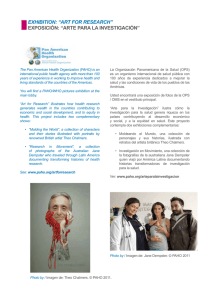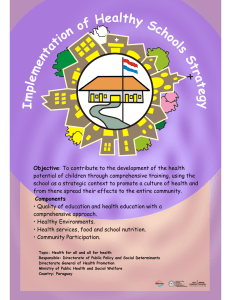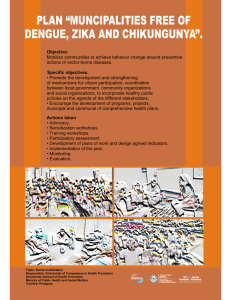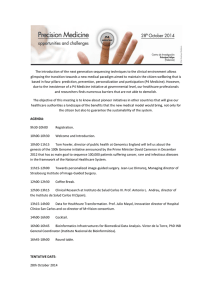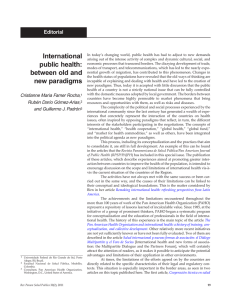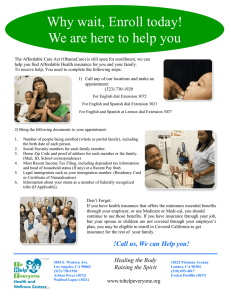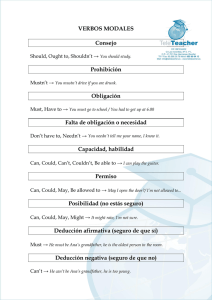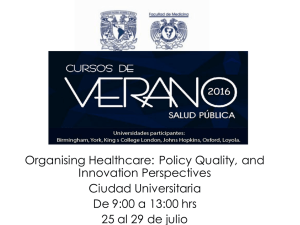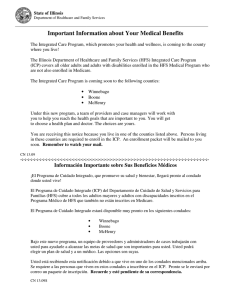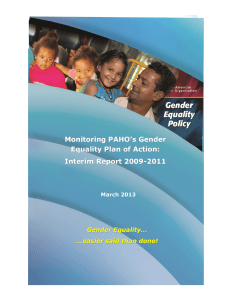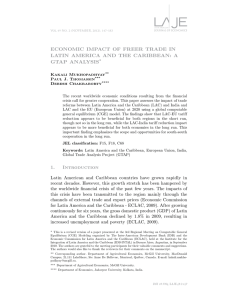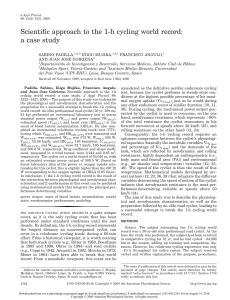Social protection in health schemes for mother, newborn and child
Anuncio
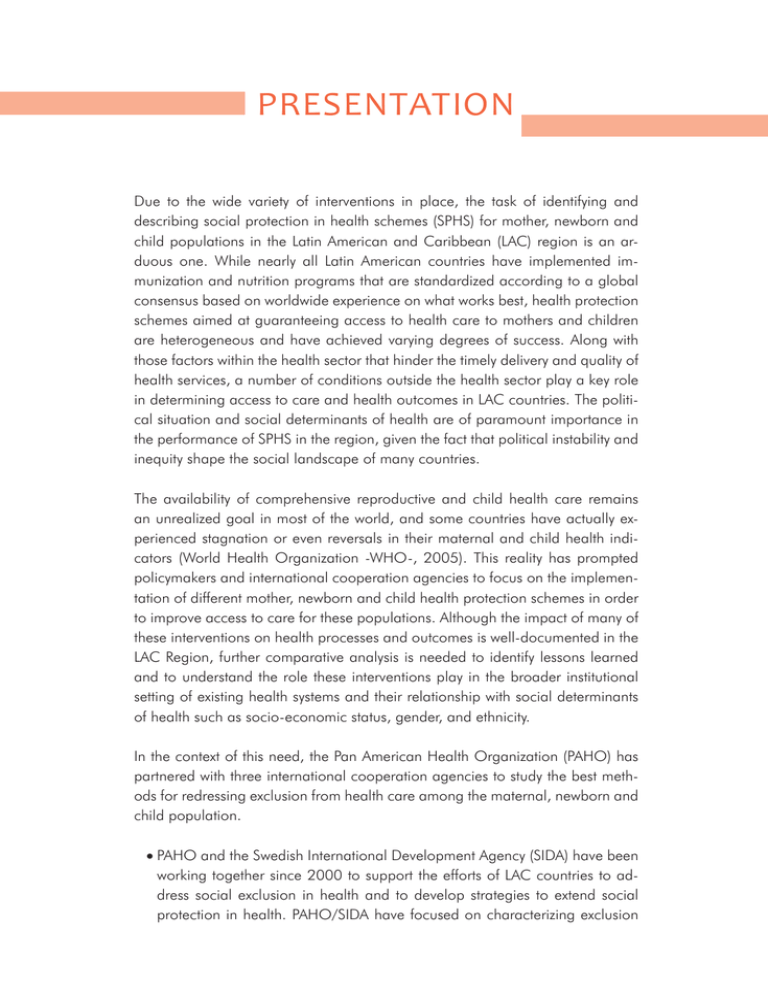
PRESENTATION Due to the wide variety of interventions in place, the task of identifying and describing social protection in health schemes (SPHS) for mother, newborn and child populations in the Latin American and Caribbean (LAC) region is an arduous one. While nearly all Latin American countries have implemented immunization and nutrition programs that are standardized according to a global consensus based on worldwide experience on what works best, health protection schemes aimed at guaranteeing access to health care to mothers and children are heterogeneous and have achieved varying degrees of success. Along with those factors within the health sector that hinder the timely delivery and quality of health services, a number of conditions outside the health sector play a key role in determining access to care and health outcomes in LAC countries. The political situation and social determinants of health are of paramount importance in the performance of SPHS in the region, given the fact that political instability and inequity shape the social landscape of many countries. The availability of comprehensive reproductive and child health care remains an unrealized goal in most of the world, and some countries have actually experienced stagnation or even reversals in their maternal and child health indicators (World Health Organization -WHO-, 2005). This reality has prompted policymakers and international cooperation agencies to focus on the implementation of different mother, newborn and child health protection schemes in order to improve access to care for these populations. Although the impact of many of these interventions on health processes and outcomes is well-documented in the LAC Region, further comparative analysis is needed to identify lessons learned and to understand the role these interventions play in the broader institutional setting of existing health systems and their relationship with social determinants of health such as socio-economic status, gender, and ethnicity. In the context of this need, the Pan American Health Organization (PAHO) has partnered with three international cooperation agencies to study the best methods for redressing exclusion from health care among the maternal, newborn and child population. • PAHO and the Swedish International Development Agency (SIDA) have been working together since 2000 to support the efforts of LAC countries to address social exclusion in health and to develop strategies to extend social protection in health. PAHO/SIDA have focused on characterizing exclusion from health care and increasing awareness of the problem through support for social and policy dialogues between social and political actors. These dialogues are aimed at implementing Plans of Action to reduce exclusion and expand protection in health. • The PAHO-USAID (United Satetes Agency for International Development) three-year agreement, signed in June 2004, also places a strong emphasis on maternal and neonatal health. This component of the agreement consists of two main activities: 1. Identify, describe and document different models of and experiences with SPHS in LAC as they relate to Maternal, Neonatal and Child Health (MNCH).1 2. Based on the different models/experiences identified, develop a comparative analysis of the strengths and weaknesses of different social health protection schemes for mother, newborn and child populations. • The third component of the 11th Joint Action Plan (PAC-XI), subscribed to by PAHO/WHO and the Spanish International Cooperation Agency (AECI), concentrates on developing actions that will extend social protection in health to the mother, newborn and child population, in line with Millennium Development Goals (MDGs) 4 and 5 (to reduce infant mortality and improve maternal health). PAHO and AECI seek to support countries in their efforts to develop their institutional capacity to extend social protection in health, with a focus on mothers, newborns, and children. This analysis is the first step in a process aimed at increasing knowledge about the dynamics of health access for mothers, newborns, and children. We hope this effort will contribute to the goal of extending social protection in health to these populations in the LAC Region. Pedro Brito Area Manager Health Systems and Servicies 1. Typically, most organizations, including WHO, refer to mother and child health as MCH. But in its 2005 World Health Report, WHO specifically highlights the importance of tackling the health needs of newborns. Hence in this document we will use the acronym MNCH which stands for maternal, neonatal, and child health. ACKNOWLEDGMENT This report is the product of a joint initiative between PAHO/WHO, USAID, SIDA and AECI, initiated in 2004/05 to identify options for extending social protection in health to mothers, newborns, and children in LAC. It relies strongly on concepts and methodologies developed since 2000 by PAHO and SIDA and on the conceptual developments of the ILO(Intenational Labour Organization)-PAHO Joint Initiative on Extension of Social Protection in Health. Two teams, one from the Health Policies and Systems Unit (HSS-HP) and the other from the Women and Reproductive Health Unit (FCH-CLAP/WR) and Child and Adolescent Unit (FCH-CA), within the Areas of Health Systems and Servicies and Family and Community Health, respectively, worked together on the publication of this paper, under the supervision of Eduardo Levcovitz and Gina Tambini. Cecilia Acuña from HSS-HP led the research team and was responsible for the development of the report. The research team also consisted of: • • • • • • Virginia Camacho, FCH-CLAP/WR Andrew Griffin, HSS-HP Rafael Obregon, FCH-CA Jessica Rada, Intern, HSS-HP Caroline Ramagem, HSS-HP Sarah Watson, Intern, HSS-HP Soledad Urrutia from HSS-HP and Rachel Kauffmann from FCH-WR provided important support to the information gathering process. Cristine Sulek from HSS-HP provided administrative support. We would like to thank the valuable inputs made by the participants in the experts’ meeting held in Buenos Aires, Argentina, in August 2005, where a preliminary version of this report was presented. Also, we deeply appreciate the comments made by the participants in the Regional Forum “Social protection in health for women, newborn, and child populations in LAC: lessons learned to prompt the way forward” held in Tegucigalpa, Honduras in November 2006, where the report served as background paper. Last but not least, we are grateful of the helpful contributions made by our counterparts from USAID, Kelly Saldaña and Peg Marshall. All of them helped to improve this report; its shortcomings remain ours alone. LIST OF ACRONYMS AECI: Agencia Española de Cooperación Internacional ARI: Acute Respiratory Infections AUGE: Acceso Universal con Garantías Explícitas (Spanish International Cooperation Agency) (Universal Access with Explicit Guarantees) BE: Bono Escolar (School Voucher) BMI: Bono Materno Infantil (Mother and Child Voucher) CDC: Centers for Disease Control and Prevention CONAMU: Consejo Nacional de las Mujeres (National Women Council) CSDH: Commission on Social Determinants of Health DHS: Demographic and Health Survey DILOS: Directorio Local de Salud (Local Health Directory) ECLAC: Economic Commission for Latin America and the Caribbean ENDSA: Encuesta Nacional de Demografía y Salud ESSALUD: Seguro Social de Salud de Perú FONASA: Fondo Nacional de Salud FONNIN: Fondo Nacional de Nutrición Infantil (National Demographic and Health Survey-DHS) (Peru’s Social Security Institute) (National Health Fund) (National Fund for Nutrition) GDI: Gross Domestic Income GDP: Gross Domestic Product GNI: Gross National Income GRADE: Grupo de Análisis para el Desarrollo (Analysis for Development Group) HIPC: Heavily Indebted Poor Countries IBGE: Instituto Brasileiro de Geografia e Estatística IDB: Inter-American Development Bank ICU: Intensive Care Units IESS: Instituto Ecuatoriano de Seguridad Social (Brazilian Institute of Geography and Statistics) (IADB) (Ecuadorian Social Security Institute) IHSS: Instituto Hondureño de Seguridad Social (Honduran Social Security Institute) ILO: International Labour Organization IMCI: Integrated Management of Childhood Illness (OIT) IMR: Infant Mortality Rate IMSS: Instituto Mexicano del Seguro Social INEC: Instituto Nacional de Estadísticas y Censos de Ecuador INEI: Instituto Nacional de Estadística e Informática ISAPRE: Instituciones de Salud Previsional ISSSTE: Instituto de Seguridad y Servicios Sociales de los Trabajadores del Estado LAC: Latin America and the Caribbean (Mexican Social Security Institute) (Ecuador National Institute of Statistics and Censuses) (National Institute of Statistics and Information Technology) (Private Health Insurance Funds) (Institute of Social Security and Services for State Workers) LACHSR: Latin America and the Caribbean Regional Health Sector Reform Initiative LMGYAI: Ley de Maternidad Gratuita y Atención a la Infancia (Free Maternity and Child Care Law) MCH: Mother and Child Health MNCH: Mother, Newborn and Child health MCHSHPP: Mother and Child Social Health Protection Policy MINSAL: Ministerio de Salud de Chile (Chilean Ministry of Health) MMR: Maternal Mortality Ratio MDG’s: Millennium Development Goals MIDEPLAN: Ministerio de Planificación y Cooperación de Chile (Chilean Ministry of Planning and Cooperation) MSP: Ministerio de Salud Publica (Ministry of Health) OECD: Organization for Economic Cooperation and Development PACS: Programa de Agentes Comunitários de Saúde PAE: Programa de Alimentación Escolar (Community Health Agents Program) (School Feeding Program) PAHO: Pan American Health Organization PEN: Peruvian Nuevo Sol PNAC: Programa Nacional de Alimentación Complementaria (OPS) (National Complementary Feeding Program) PPP: Purchasing Power Parity PRAF: Programa de Asignación Familiar PROGRESA: Programa de Educación, Salud y Alimentación PSF: Programa Saúde da Família (Brazil) PSF: Plan de Salud Familiar (Chile) SAP: Structural Adjustment Programs SBS: Seguro Básico de Salud (Family Allowance Program) (Education, Health and Nutrition Program) (Family Health Program) (Family Health Plan) (Basic Health Insurance) SEG: Seguro Escolar Gratuito (Free School Insurance) SPHS: Social Protection in Health Scheme SIDA: Swedish International Development Agency SIS: Seguro Integral de Salud SMI: Seguro Materno Infantil SNMN: Seguro Nacional de Maternidad y Niñez SUMI: Seguro Universal Materno Infantil SUS: Sistema Único de Saúde TGN: Tesoro General de la Nación UN: United Nation (ASDI) (Integrated Health Insurance) (Mother and Child Insurance) (National Mother and Child Insurance) (Universal Mother & Child Insurance) (Unified Health System) (National General Treasury) (ONU) UNDP: United Nations Development Fund UNFPA: United Nations Fund for Population Activities UNICEF: United Nations Children’s Fund USAID: United States Agency for International Development WB: World Bank WHO: World Health Organization (BM) (OMS)
